
As revealed by Lighstpeed’s 2023 retail survey, Australian shoppers are largely motivated by one key factor; price.
It’s not a surprise given the climate. Between a global pandemic and rising cost of living pressures the majority of shoppers have to be more considerate of how they spend their money.
As a result, retailers have weathered their fair share of adversity too, (unless your name is Gerry Harvey).
However, all hope is not lost. Data from Statista’s Holiday Season Shopping in Australia report reveals that retail spending for the pre-Christmas period in Australia is forecasted at $66.8 billion.
With the holiday season quickly approaching, it’s more important than ever to ensure you have a keen understanding of the nuanced ways price motivates shoppers in order to anticipate their behaviour and ultimately sell more.
4 ways pricing affects purchasing behaviours:
- Not every product is worth splurging for
- Holiday promotions and discounts are very attractive
- Extra costs will prove to be costly for retailers
- Customers love local deals
1. Not every product is worth splurging for
Who doesn’t love a good bargain? Across retail industries, price is a dominant factor that influences a customer’s decision to purchase a product or service. However, that doesn’t mean slashing prices like a closing down carpet warehouse will rake in monumental profits.
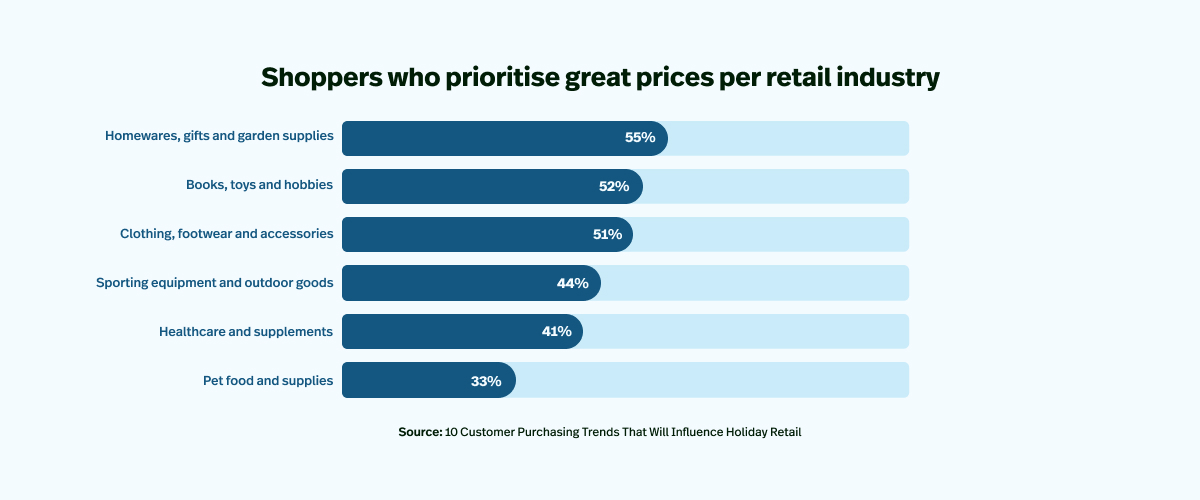
Consider the data; over 50% of shoppers looking for homewares, books and toys, and clothing are more likely to be influenced by price. Meanwhile, only 33% of pet supply shoppers consider great prices to be a major purchase factor. When it comes to the happiness of fur babies, it’s safe to say pet owners aren’t willing to risk quality for cheaper deals.
So where are shoppers willing to pay more? According to the research, threads and kicks are where it’s at. 48% of customers are more willing to spend upwards of $100 shopping for clothing, footwear and accessories, closely followed by sporting equipment at 38%.
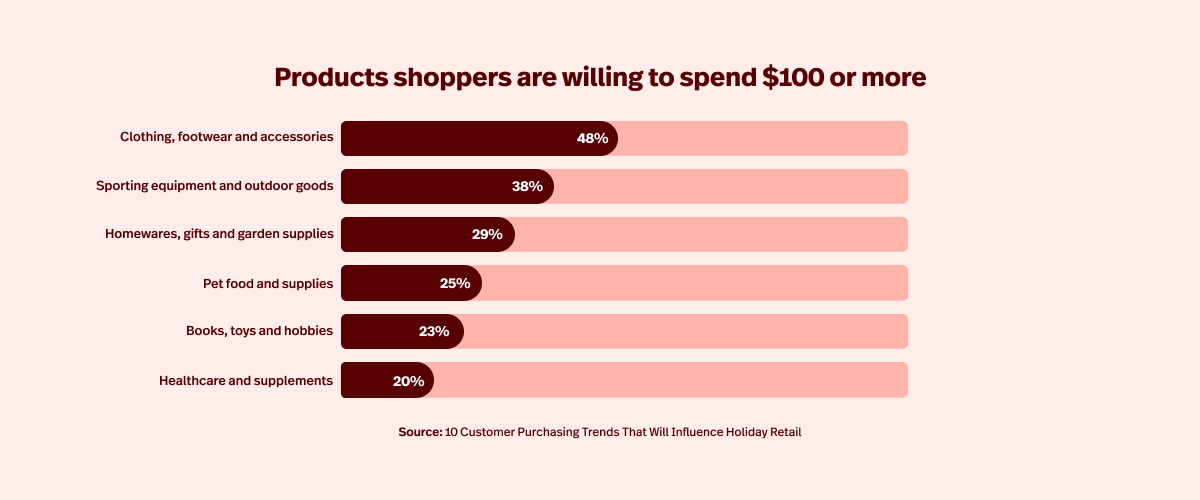
While a bargain is always nice, be conscious of how shoppers perceive the value of the product and what they can afford to pay more for.
2. Holiday promotions and discounts are very attractive
‘Tis the season for holiday promotions. With price a major factor for shoppers, holiday promotions and discounts will be a major draw for those who are looking for a good deal.
In fact, Lightspeed’s data indicates that seasonal promotions, discounts and packages are proven to compel shoppers to make a purchase. Once again clothing, footwear and accessories are the products that shoppers are predominantly looking for discounts. After all, the classic ‘buy one, get the second 50% off’ discount is a tried and true promotional tactic for clothing retailers.
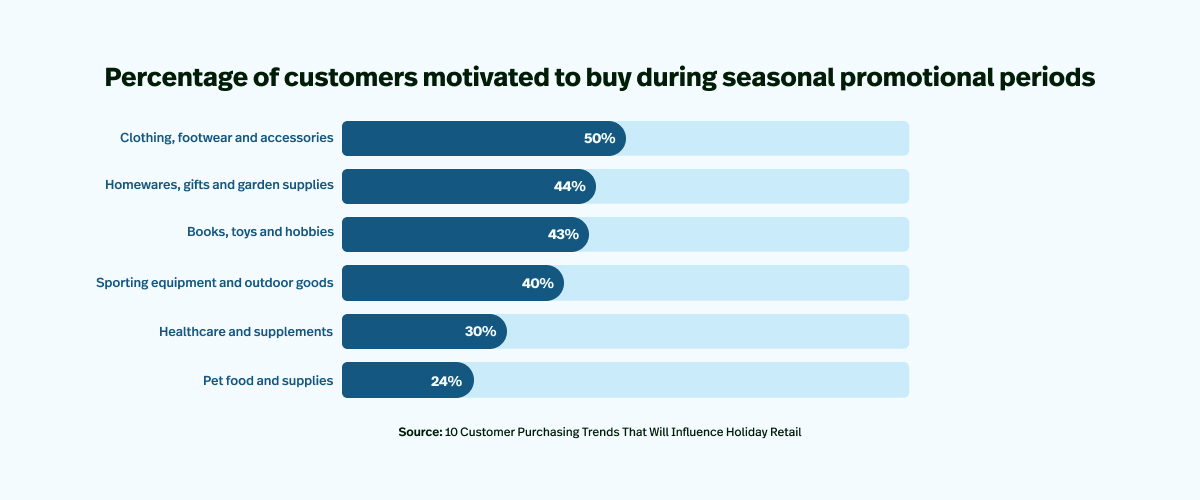
Data from Statista’s Holiday Season Shopping in Australia report also reveals that forecasted spending for clothing and homewares in Australia will be $5.6 billion and $11 billion respectively. The market is ripe with opportunity, what matters is whether you can attract shoppers with an attractive and economical seasonal promotion.
So what makes a holiday promotion worth your while? The key is Scarcity Principle, which dictates that anything that is limited in supply will be perceived as more valuable. The Scarcity principle can also be applied to limited time discounts, compelling shoppers to snatch up a once in a year bargain (literally!).
3. Extra costs will prove to be costly for retailers
75% of customers say avoiding shipping or return costs affects their decision to shop in-store instead of online. Not only does that carry a risk of spending money on the wrong gift, but also the inconvenience of being stuck with an item they don’t want. It’s a lose-lose situation for your customer, and for your business.
Customer experience can’t be discounted. In fact, 38% of shoppers say the ability to find cheaper deals online keeps them from visiting stores. With many shoppers wary of prices and keeping a keen eye out for discounts, deals and promotions, you must consider any inconvenience or extra costs as a major hurdle to attracting customers.
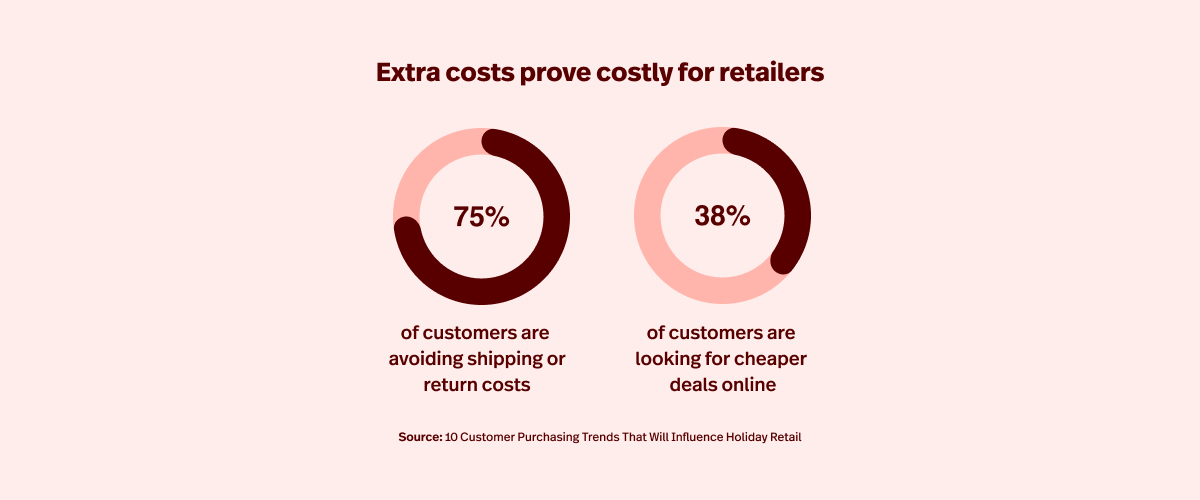
4. Customers love local deals
Here’s to the local heroes; 34% of shoppers say access to special deals for locals is a major pull to visit stores in their area. Does that mean you should be checking shopper’s postcodes at the door? Probably not, but there are plenty of ways to embrace your community spirit and encourage locals to visit your store.
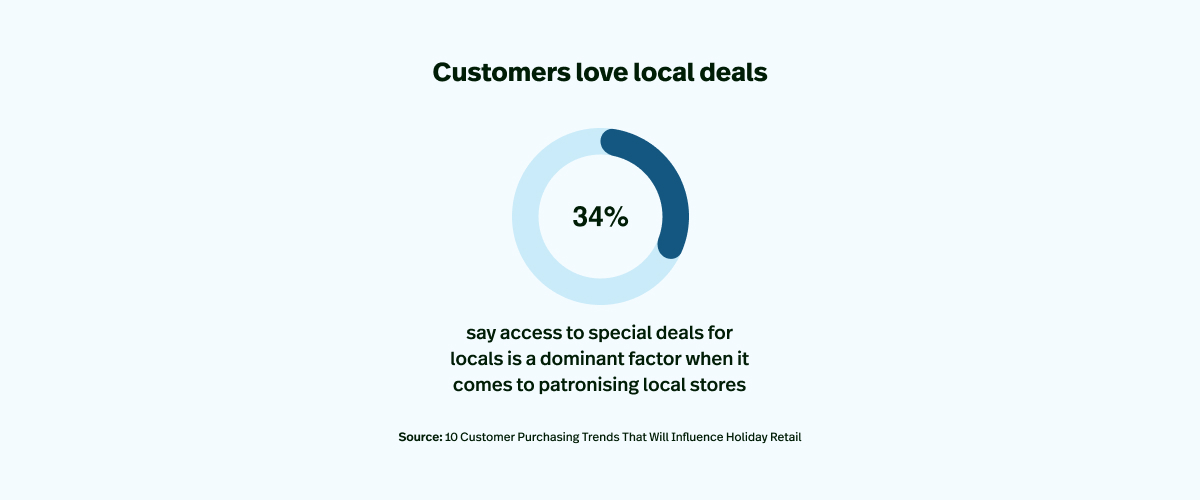
A great way to encourage local shoppers is taking the eco-friendly angle–if your products are made in-house, use sustainable materials or are sourced locally, it creates a potent brand for your business.
More shoppers are looking for sustainable and local options. According to Statista’s Sustainable Consumption in Australia report, 58% of shoppers prefer to buy from brands that are Australian owned. A further 44% of Australian shoppers said they were buying locally sourced or produced products in an effort to be more sustainable.
A further US-based study by McKinsey & Co revealed that products claiming their products are ESG (environmental, social, and corporate governance) averaged 28% cumulative revenue growth from 2018-2023. In comparison, products that didn’t make ESG claims only saw 20% growth in the same period.
Do you understand the customer behaviours that will influence holiday shopping?
Product pricing can be a tricky tightrope retailers have to walk, balancing profitability with customer experience. If you can walk that line, not only can you set yourself up for a profitable holiday season, but light the fire for a promising 2024 and beyond.
Want more insights into customer purchasing behaviour?
Compiled from survey data of hundreds of Australian shoppers, Lightspeed’s holiday retail report details the 10 consumer purchasing trends that will influence buying behaviours. Download the report for free to better understand your customers.

News you care about. Tips you can use.
Everything your business needs to grow, delivered straight to your inbox.



